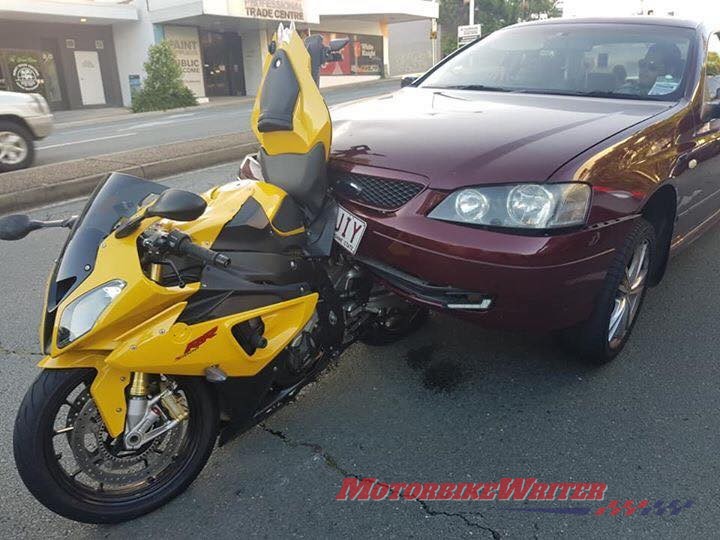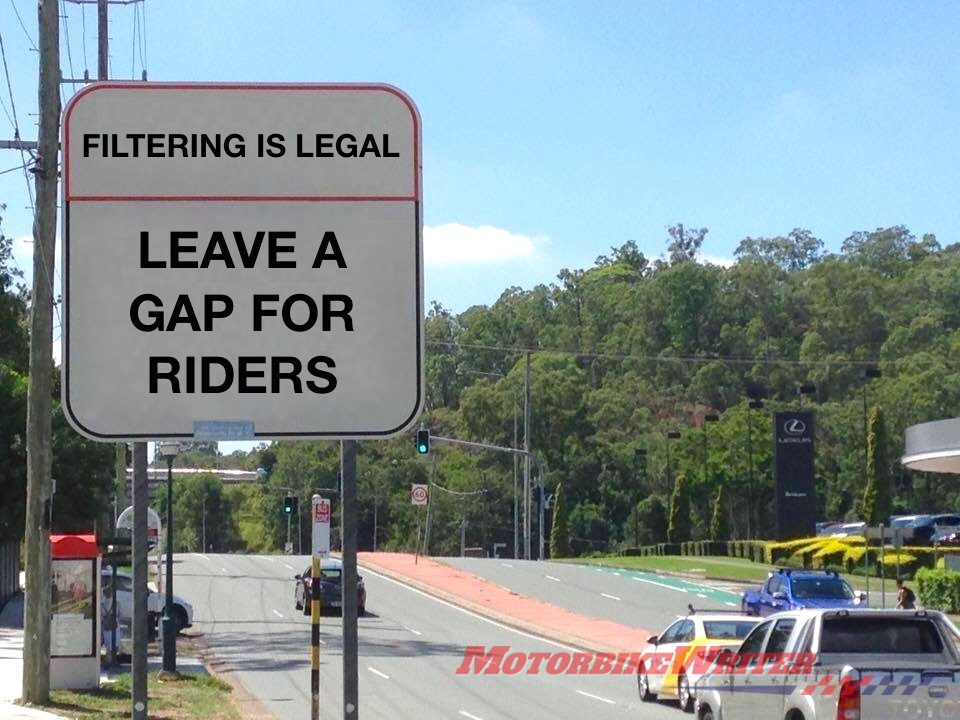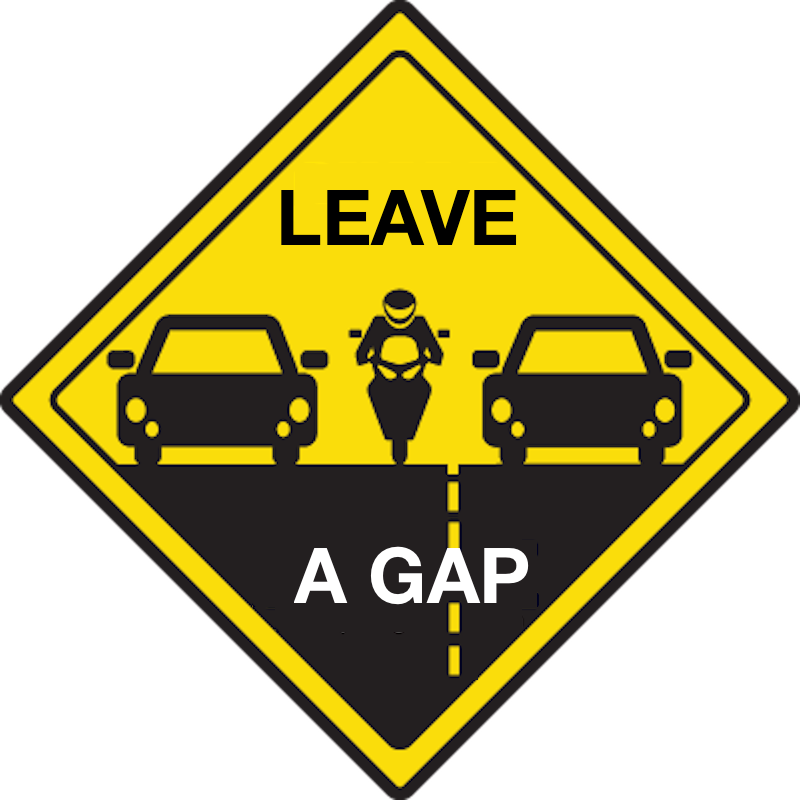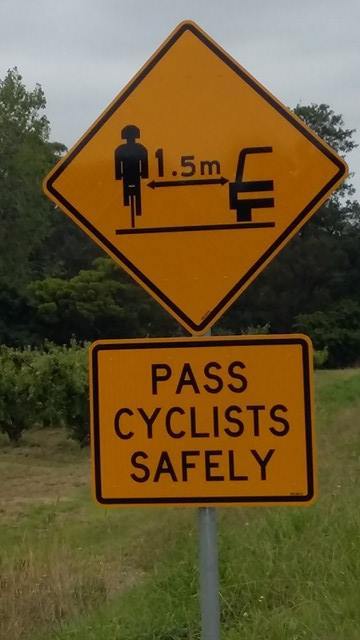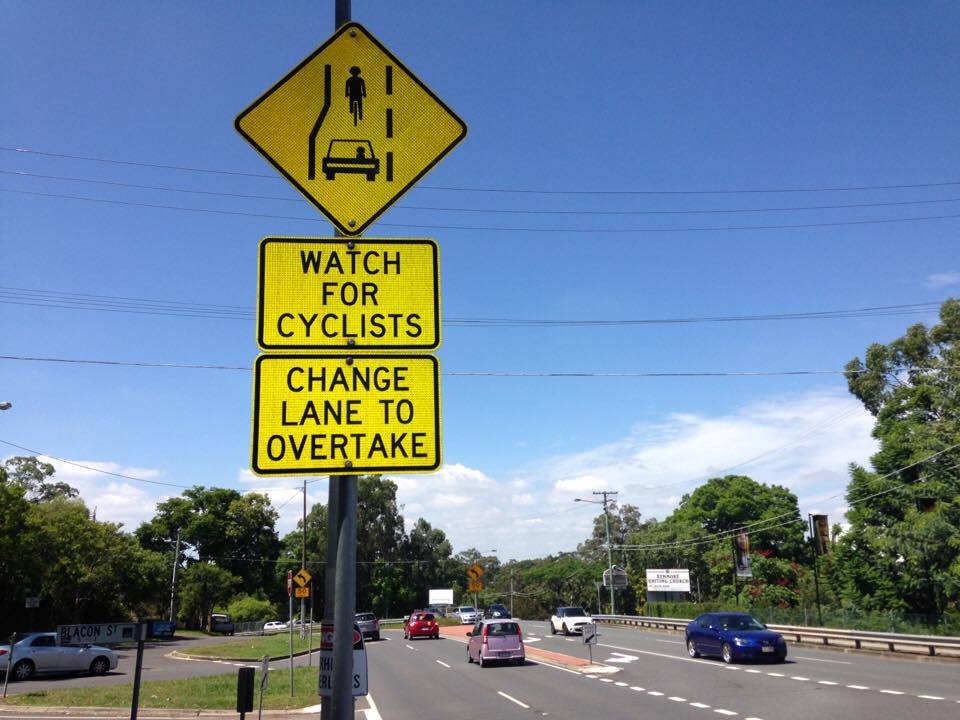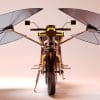Roadside signs, advertising billboards or electronic mobile signs on busy commuter routes advising motorists that lane filtering is legal would be an effective education campaign for motorists, say rider representatives.
Many riders tell us there is a lack of public education that lane filtering is now legal, sparking road rage toward motorcyclists.
So we contacted roads Ministers and departments in each state to find out exactly what advertising they have tried and have planned.
Despite rider impressions of a lack of public education there seems to have been a fair bit of activity.
Most seem to involve notices in registration reminders, radio ads, websites, social media and YouTube such as this.
State advertising
Tasmania is the most recent state to introduce lane filtering, starting in October 2018.
Tasmania Motorcycle Council president Paul Bullock says he raised the issue of advertising with the Road Safety Advisory Council in November.
“RSAC is about to run lane filtering advertisements between 18 March – 12 April 2019 and will include radio advertisement and access to the video from the online newspapers,” he says.
NSW says lane filtering will feature in this year’s Road Rules Awareness Week beginning on 8 April.
And Queensland is developing social media content for next month to educate drivers about lane filtering, including posts targeting drivers.
“These posts will be boosted to increase their reach beyond our 143,500 StreetSmarts social media followers,” a Main Roads spokesperson says.
VicRoads says they started with a community education campaign in 2015, followed by a refresher campaign in early 2018.
“Other advertising channels included metro and regional radio, video screening and social media,” a spokesperson says.
“The video that was produced had strong social media engagement and was viewed over 1 million times.
“To ensure ongoing behaviour change, VicRoads is currently developing additional collateral to communicate the rules to riders and the general public.”
So clearly there isn’t a lack of advertising education campaigns about lane filtering.
Roadside signs
Maybe the problem is that the ads are misguided as they do not seem to have made a big impact on the motoring public.
They’ve been sporadic at best and not exactly targeted where lane filtering is most likely to occur – on busy multi-lane roads that become congested in peak commuter times.
Roadside signs (like our Photoshopped image at the top of this article) in these locations would surely be the right message at exactly the right time and in the right location.
Yet there has been little if no roadside advertising advising motorists lane filtering is legal.
It should be noted that Victoria has signs in some no-filtering zones indicating the start and end of the zone. But that does not advertise that lane filtering is legal elsewhere.
Motorcycle Council of NSW chairman Steve Pearce says we need roadside signs like the ones that remind motorists to leave a 1m buffer with cyclists.
He suggests lane filtering laws be changed to put the onus on drivers like the cyclist buffer law.
“Under the cyclist buffer rule, the legal onus is on the driver to move over a metre, but there is no onus on the driver to make motorcyclists safe in the lane filtering rules,” he says.
“Drivers should be doing everything they can to make the rider safe. Moving over half a metre would mean nothing to them.
“When I lane filter, some people pull over, but some make it hard for you. That should be illegal.”
Former No 1 member of the Motorcycle Riders Association of Australia, Rodney Brown, agrees.
“Look at all the exposure pushbikes have received regarding leave a metre or so road space for them,” he says.
“Gee, we have had that rule pushed down our throat!
“What is the TAC (Traffic Accident Commission) doing with all of our motorcycle safety levy money?”
MRA Victoria spokesman Damien Codognotto says there is still millions of unspent safety levy money available.
“So there is no excuse for not running a campaign right now,” he says.
Tim Kelly from the South Australian Ride to Review group says there needs to be more awareness around the practice of lane filtering being legal.
“I’ve not experienced road rage whilst filtering, but I’ve had plenty of drivers try and make it hard but; that’s the way it was before legalisation,” he says.
“Signage is a good idea for main thoroughfares, or even those mobile billboards,” he suggests.
However, he says politics could quash any advertising campaign for lane filtering.
“It is important to note that this government was not in power when filtering was legalised,” he says.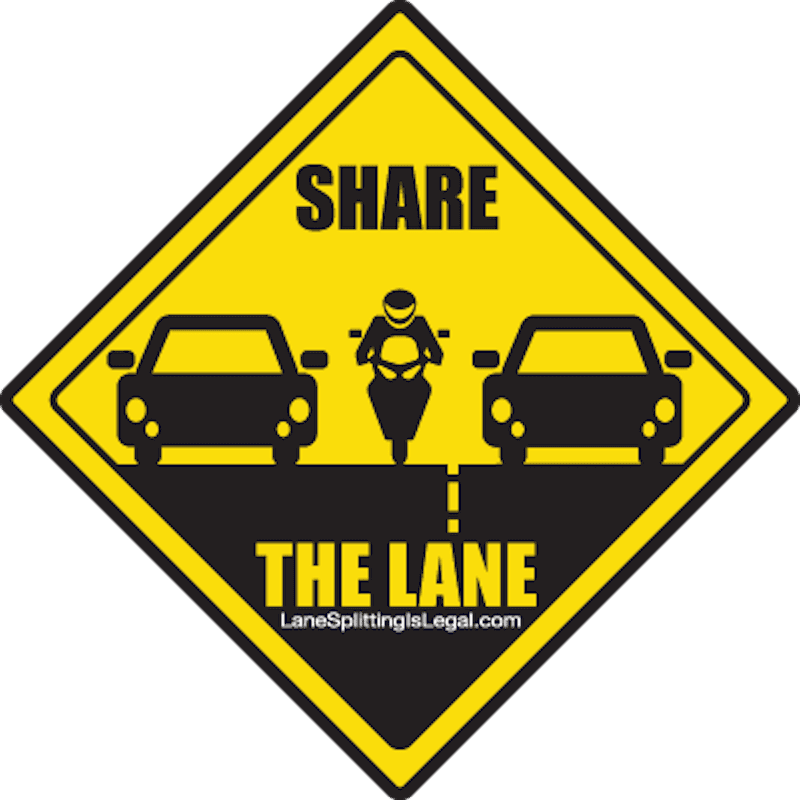

Damien also suggests a “simple message” about sharing the road.
“The message should be positive telling car drivers that for every motorcycle or scooter that passes them on the way to work/home there’s less traffic and more parking ahead of them,” he says.
Filtering laws
Lane filtering has now been around in most states since NSW launched a trial in late 2012.
Yet riders continue to say there are many motorists who have no idea filtering it is legal.
Some have taken the advertising campaign into their own hands with small “lane filtering is legal” stickers on their bikes and/or helmets.
Many riders say driver attitude is improving.
However, road rage toward riders like this still exists and is totally unacceptable.
